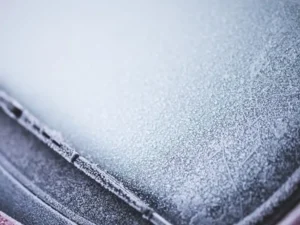Rubber whitening, also known as rubber blooming, is common among all the products. Due to this issue, people discard products due to their whitish appearance. The marine fenders, which consist of rubbers, are also affected and are no exception.
Rubber blooming happens when the interior component of rubber comes out at the surface. These components or additives make contact with oxygen. As a result, an oxidation process happens that degrades the whole rubber. It results in a whitish powder on the outer surface of the rubber.
The interior components get loose due to moisture and many other factors. This guide will cover everything about rubber whitening. You’ll get the solution and prevention as well. So, let’s jump into it and explore!
Overview of Rubber Blooming

This rubber phenomenon is least understood, but it is simple to understand. When the rubber remains unchecked for a long time, it starts to lose its color. The white color starts to prevail due to the oxidation of interior material in the presence of light.
From marine fenders to household products, this issue is common in everything. There are some precautions that people need to pay heed to. However, minor blooming and whitening can be solved with some effort.
The ship fenders remain in the water for long. The salty water affects the additives of the rubber. If the marine fenders bloom and whiten, it would be tough to restore the original color. This issue also affects the outer rubber of ship airbags. So, proper maintenance and periodic checks on fenders are vital.
Ways of Rubber Blooming
The whitening of the rubber does not happen overnight. The material inside the rubber takes time to deteriorate. Following are the typical ways through which the phenomenon of rubber decolourization happens on products:
- Powder Spraying: Rubber materials consist of different chemicals that are used for their durability. When the rubber gets old, these chemicals separate from the surface of the rubber. Due to rough usage, those chemicals in the form of powder come on the outer surface. They make the white layers on the surface and lead to rubber blooming.
- Wax Spraying: The waxy substances are added to the rubber to increase their moisture resistance. They usually remain intact on the surface of the rubber product. However, when the product remains at a high temperature for a long time, the wax sprays out on the surface. It causes the whitening of the product.
- Oil Injection: To increase the flexibility, the manufacturers add oils of different grades to the rubber. However, when the stress comes on the rubber, the oil comes out at the surface. It makes an oily layer that looks like a whitening. If the rubber remains in safe conditions, the chances of rubber blooming decrease.
Causes of Rubber Whitening
Multiple reasons contribute to the whitening of the rubber in products. From moisture to the quality of the rubber, everything matters. Understanding the factors can help you avoid the issue to a large extent.
As I said, there are various causes of this issue. However, what causes blooming in your product can vary. Therefore, you’ll have to understand all the possible reasons. It will ensure that you follow precautions against all those odds. In the section below, I’ll explain the different reasons why rubber gets whitening.
1- Moisture and humidity
Moisture and humidity are key factors. They cause the rubber to turn white. The rubber absorbs the water molecule when it remains in contact with it for long. These molecules cause hydrolysis and other chemical reactions in the rubber.
These reactions lead to the degradation of the material inside the rubber. On deterioration, the material of the rubber comes out on the surface and makes layers. This is why all those rubber products that are used in water get white over time.
The marine fenders are also affected in the same way. The reason is that they remain in the seawater. This salty water starts a different chemical reaction within the rubber. This reaction degrades the product, and white layers are visible on the outer surface.
2- UV Rays Exposure
UV radiation is another major factor. The rays from the sun strike the surface of the rubber. These rays have high-energy photons. As they have high energy, they start the photo-oxidation of the rubber material.
Due to this oxidation in the rubber, free radicals are produced. These radicals are very reactive. They start to affect the polymer chain of rubber due to their reactive nature. The bond between the chain weakens. The material that should remain intact starts to loosen from the surface.
So, the material comes out on the surface due to the weakening of internal bonds. The weakened component makes the layer of white powder come on the surface of the product. Keep in mind that UV radiation also causes cracking and weakening of the rubber product.
3- Contaminants and Additives
If the rubber product remains unchecked, it will start to lose its color. This is due to the presence of contaminants in the surrounding area. When the rubber product is not cleaned, those contaminants remain on the surface of the rubber.
These additives or contaminants started to change the properties of the rubber. If the additives remain for a long time, they start affecting the rubber’s building material. As a result, the internal material is degraded. Thus, degraded material creates a layer on the surface and causes whitening.
4- High Temperature & Environmental Conditions
High temperature is another culprit for the whitening of rubber. The reason is that it increases the rate of chemical reactions happening inside the rubber. For example, if hydrolysis occurs in the rubber. Its rate will increase due to the presence of high temperatures.
Not only temperature but other environmental conditions also cause it. Those include humidity, extreme dryness, and stress. Therefore, it is vital to keep the product at a mid-range temperature. It will slow down the chemical reaction and increase the life of the rubber.
5- Rubber Quality
If the rubber is of low quality, it will not survive UV radiation and high temperatures. In fact, products made with cheap rubber start to lose their color immediately when exposed to high temperatures. Usually, cheap fenders use such low-quality rubbers. They don’t offer durability and do last longer.
I suggest you choose a product with high-quality rubber, such as EPDM (Ethylene Propylene Diene Monomer). Such products remain in good shape for the years to come. The reason is that the EPDM offers excellent resistance to UV radiation and high temperatures.
6- Rubber Aging
No matter how strong rubber is, if it is too old, it will degrade. The aging of the rubber material is matter-of-fact. After some time, the rubber material starts to degrade. The reason is that moisture, UV rays, and temperature make it weak. It keeps weakening from time to time.
In the end, the internal material comes out and makes layers on the surface. Aging is common in all types of rubber material. It fights against harsh conditions. Once it is too old, its material will start deteriorating. Therefore, you should keep checking your pneumatic fenders and other products.
Preventions of Rubbers Whitening in Fenders

Like I said, rubber blooming is frustrating. Although there are some solutions, they are never 100% effective. Especially if the blooming is too hard, it won’t be obliterated. Therefore, it is essential to understand prevention.
Understanding them will help you save your precious products from rubber whitening. In the section below, I’ll discuss the different prevention methods. You can follow them to get your marine fenders and other products safe.
1- UV Stabilizers
As you know, ultraviolet radiation is one of the primary reasons rubber gets white. So, if you use a rubber product with a UV stabilizer, your product won’t be affected by UV radiation. Nevertheless, this won’t save you if you already bought rubber products. It will protect you in the future.
The UV stabilizers absorb the radiation. So, no radiation reaches the surface of the rubber. In this way, the interior of the rubber remains safe from the chemical reactions. No radical is produced in such cases. However, you’ll have to buy the rubber with UV stabilizers in its formation.
2- Protective Coatings
The manufacturers apply a thin layer of different materials to save the rubber. Such layers protect the product against the high temperature. Although this is not the perfect solution, it still improves life significantly. Many marine fenders come with such paint coats and layers.
If you have a rubber product, you get a coating on it. This coating process is not very expensive. It won’t be wrong to say that this coating acts as a barrier. This coating method to protect the rubber product is becoming famous. In the future, you will use most rubber products with such protective coatings.
3- Regular Maintenance
As I said earlier, the rubber fenders and other products don’t degrade overnight. Their degradation of material takes time and consists of favorable conditions. For example, the rubber will get white if it remains in bad situations for an extended period. If you keep the product in good shape by maintaining it, it won’t lose its color.
Whenever you see any contaminants on the rubber, remove it. You can even apply a thin coat on the surface of the rubber. Daily checks and maintenance increase the life of the product. However, if you leave it unchecked, the environmental conditions will degrade the material. You’ll face a whitening problem.
4- Optimal Storage
At the start, I said that moisture is the basic reason for rubber blooming. When rubber products such as fenders, etc., remain in the water, the molecules of water interact with the material rubber. In this way, the hydrolysis reaction happens.
As a result of this reaction, the material undergoes degradation. Usually, people store the rubbers in damp or humid places. So, the moisture remains in contact with the product. You should store the product in a dry place. Make sure that your product won’t make any contact with moisture or humidity.
How to Remove Rubber Blooming on Products?
Different methods can be effective in tackling blooming. However, I don’t recommend you do experiments. The reason is that doing experiments using different chemicals can further affect the rubber material. In the section below, I mention three effective and proven ways to clean the white rubbers:
- Damp the cloth in alcohol, and gently wipe the whitening present of the rubber product.
- You can also use the mixture of water and vinegar (in equal amounts) and gently remove the blooming.
- The usage of petroleum jelly is also helpful in this regard. Apply the jelly on the affected surface. Let it be there for 15 minutes. Remove it by wiping it with a cloth.
- Last but not least, using the paste of baking soda with water is also very beneficial. The baking soda (sodium bicarbonate) has cleaning properties. Once the baking soda has taken the whiteness, you can rinse it with water.
Avoid using extreme chemicals. The reason is that instead of removing whiteness, they affect the material of rubber. The material starts to degrade due to coming in contact with harsh chemicals. The methods mentioned above are proven and effective.
Does Rubber Blooming Affect the Performance of Fenders?

Yes, the rubber blooming weakens the marine fenders if they remain unchecked. The material migration from the interior to the exterior surface will make the surface slippery. The ability of the fenders to absorb kinetic energy will be affected.
Fenders play a crucial role in the mooring of ships. They keep the vessels safe by absorbing the shocks when the ships approach the docks. But the rubber bloom weakens the fenders. Their ability to absorb the kinetic energy reduces significantly. They also become more slippery.
So, when such rubber fenders are used, they do not work smoothly. Instead, the ship faces a jerk as the fenders do not absorb the shocks effectively. Moreover, the whitening of the rubbers also affects the looks and aesthetics of the fenders.
Conclusion
No doubt that rubber aging has a role in the loss of color. However, many other factors contribute to the blooming of rubber. If we control these factors, the chances of the rubber getting decolorized can be reduced.
In this guide, I have explained the blooming problems in rubber products. You can avoid it by following the precautionary measures. However, if your product already has it, use alcohol or vinegar with water to clean it.
